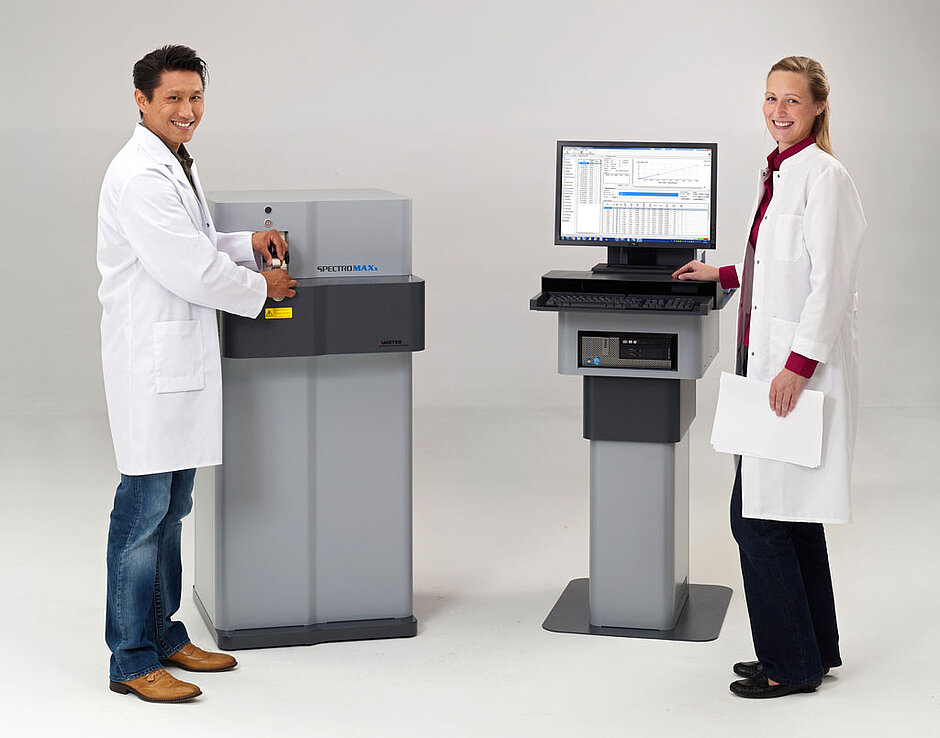- Improved operation using toolbar buttons, user management and separation of operation from programming
- Increased analytical performance for difficult samples
SPECTRO has brought onto the market the third generation of its highly successful SPECTROMAXx stationary metal analyzer. The latest generation takes over where the second generation SPECTROMAXx, developed in 2009, leaves off. SPECTRO has improved operation of the instrument with the use of toolbar buttons, a user management system, and a separation of operation from programming of the instrument.
The SPECTROMAXx is used mainly for material testing in foundries and for incoming and outgoing inspections in the metal industry. With it, users are able to determine all of the elements used in the metal industry, including trace analysis of carbon, phosphorous, sulfur and nitrogen. Calibration modules are available for base metals: iron, aluminum, copper, nickel, cobalt, titanium, magnesium, zinc, tin and lead.
“The SPECTROMAXx is an extremely important analytical instrument for the metals industry and can be found around the world. During its redevelopment, we took many of our customers’ ideas into consideration,” reports Kay Tödter, who is responsible for stationary metal analyzers at SPECTRO. “In this age of smart phones and tablets, users expect a completely different ease of operation from a complex analytical system, compared to a just few years ago.”
The SPECTROMAXx fulfills the users’ need for simplification in several ways: The measurement is no longer controlled through the menu, but with symbols and toolbar buttons. Once a procedure has been started, only the functions that are logical at that point in time are active in the control software – all other commands are hidden. The metal analyzer also offers a user management system that permits rights for individual employees to be determined. ”Temporary workers or summer jobbers are able to start single measurements, whereas trained laboratory technicians, for example, have extended or complete access to all control functions and parameter settings,” comments Tödter.
Separation of the operating module from the method development module is another major advantage of the new instrument’s software. Information needed for operation is directly accessible without having to change the method data.
The SPECTROMAXx’s analytical diagnosis system also has been improved. The instrument independently monitors all operating parameters. It even shows when the spark stand needs to be cleaned depending on the type of samples being analyzed.
“The cleaning intervals are very much dependent on the sample material being analyzed,” adds Tödter: “With smart excitation, maintenance work can be planned better, thus increasing availability of the instrument. The SPECTROMAXx's dynamic excitation determines the measurement time required based on the given sample properties. In this way, the instrument is faster in many applications than a system with fixed measuring cycles.”
The SPECTROMAXx is delivered together with Result Manager, an analysis archive software. The Result Manager documents when a given sample was analyzed and the measurements the instrument delivered. This enables paperless documentation that is also suitable for audits. Additionally, the Result Manager provides filtering und sorting capabilities. It also shows, using trend charts, how often and for which samples quality-relevant tolerances for individual selected elements have been met or exceeded.
Improved Analytical Performance
The instrument’s analytical performance also has been improved. The instrument offers a new method for determining the carbon content in spheroid ductile iron for non-optimal samples that has achieved results that lie in the repeatability range of combustion analysis (<0.1%). This method offers the following advantages: 1) replaces much more complicated and expensive combustion analysis; 2) provides clear evidence as to the quality of the given sample. A sample that has been rejected due to excessive free graphite contents cannot lead to “correct” results for other important elements.
With the revised methods for the measurement of small parts and optimization of the parameters, it is now generally possible to analyze nitrogen in iron-based materials. These parameters can be easily adjusted as necessary for special cases.
also available in <link record:tt_news:12324 internal-link>![]()
![]()
###COMPANY_LINK### <link record:tx_browserdirectory_directory:27 internal-link>![]() SPECTRO Analytical Instruments GmbH & Co. KG
SPECTRO Analytical Instruments GmbH & Co. KG


